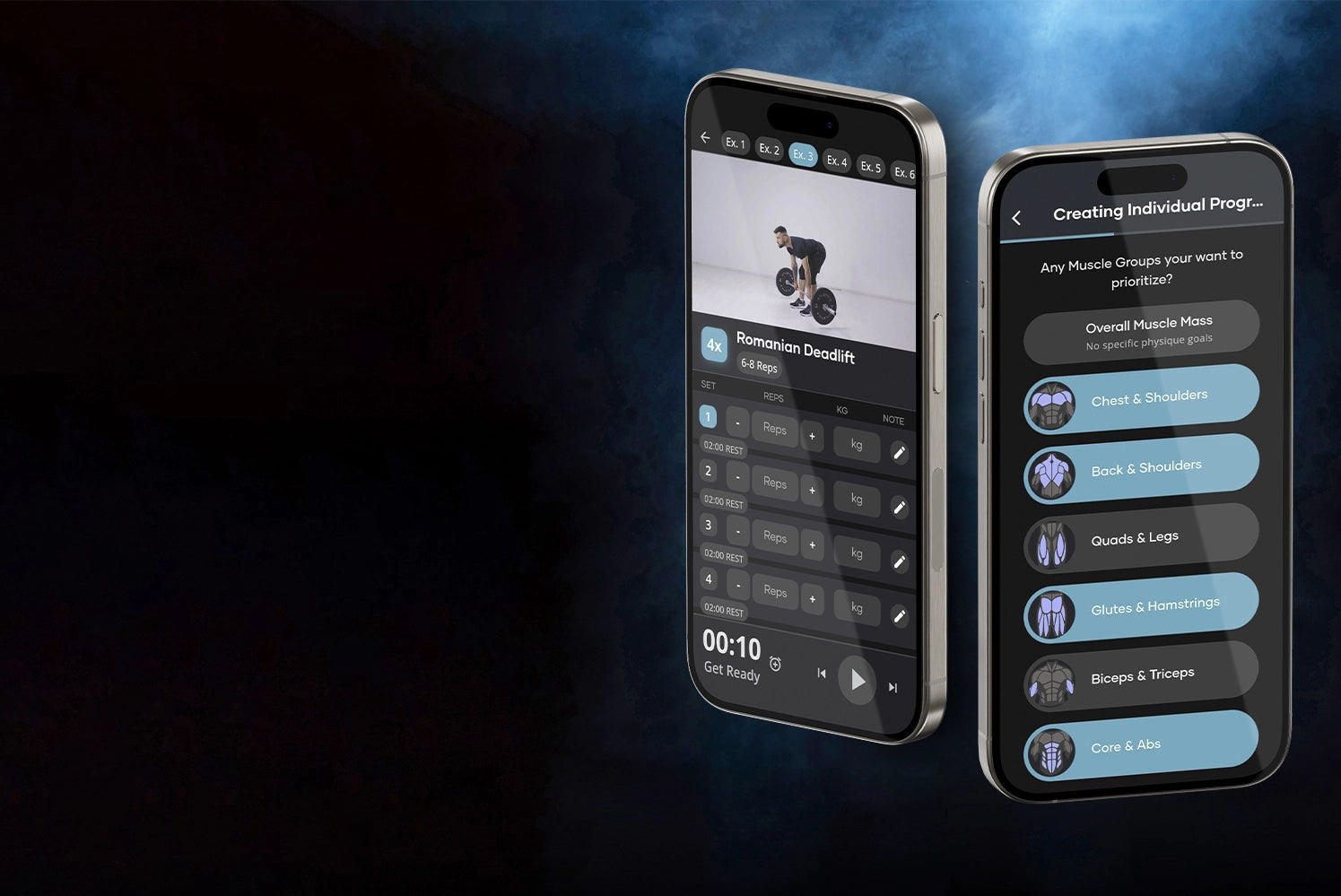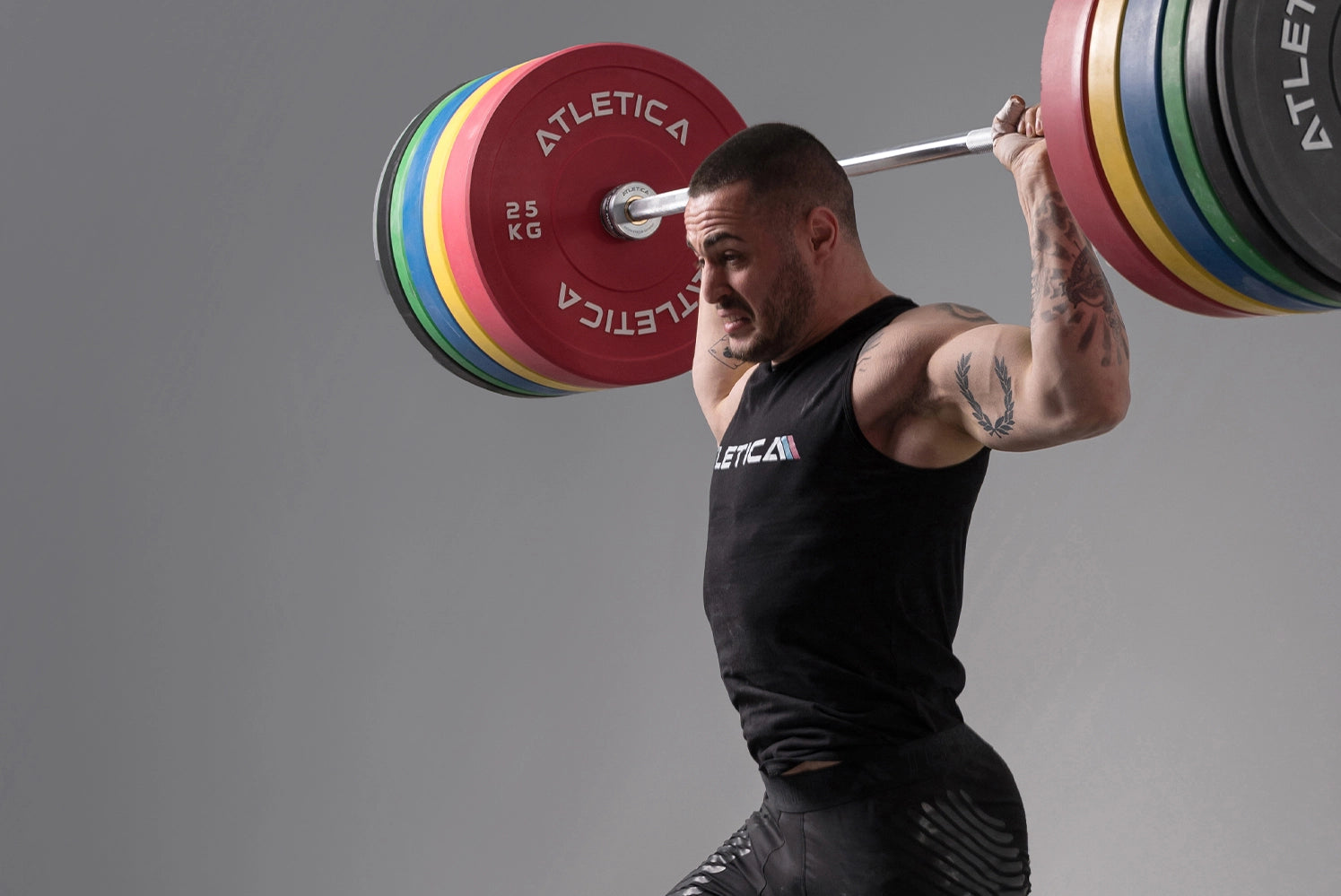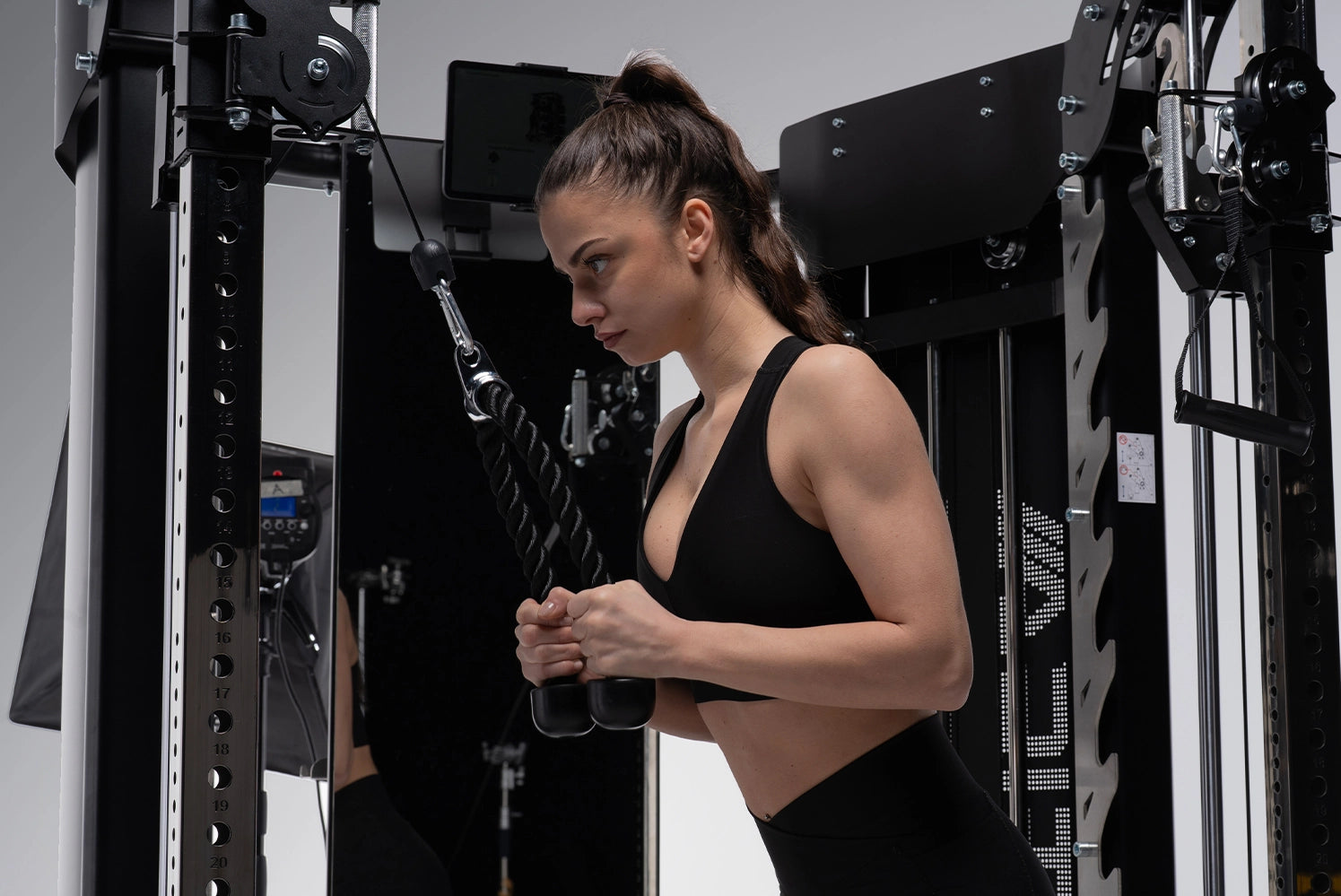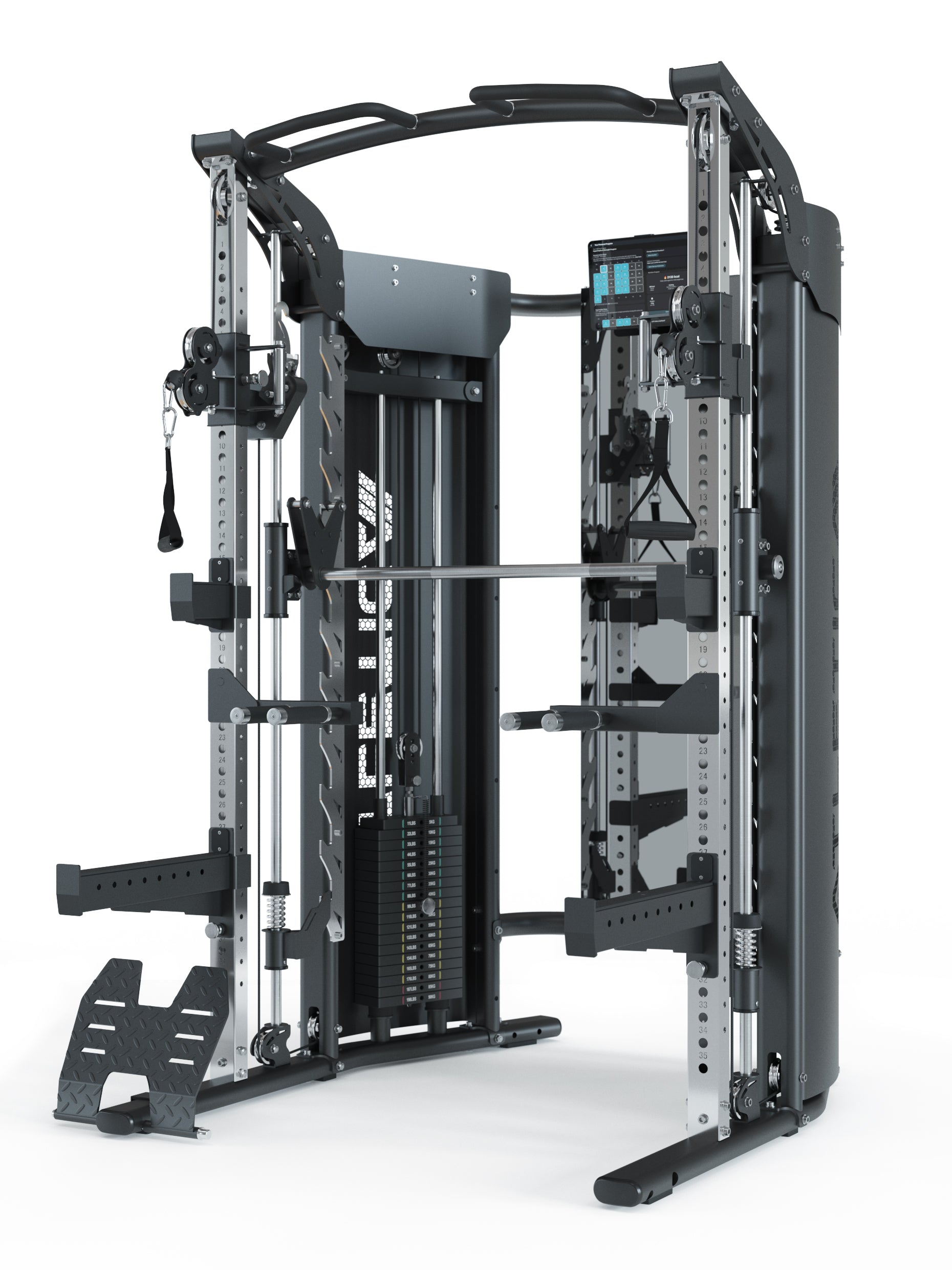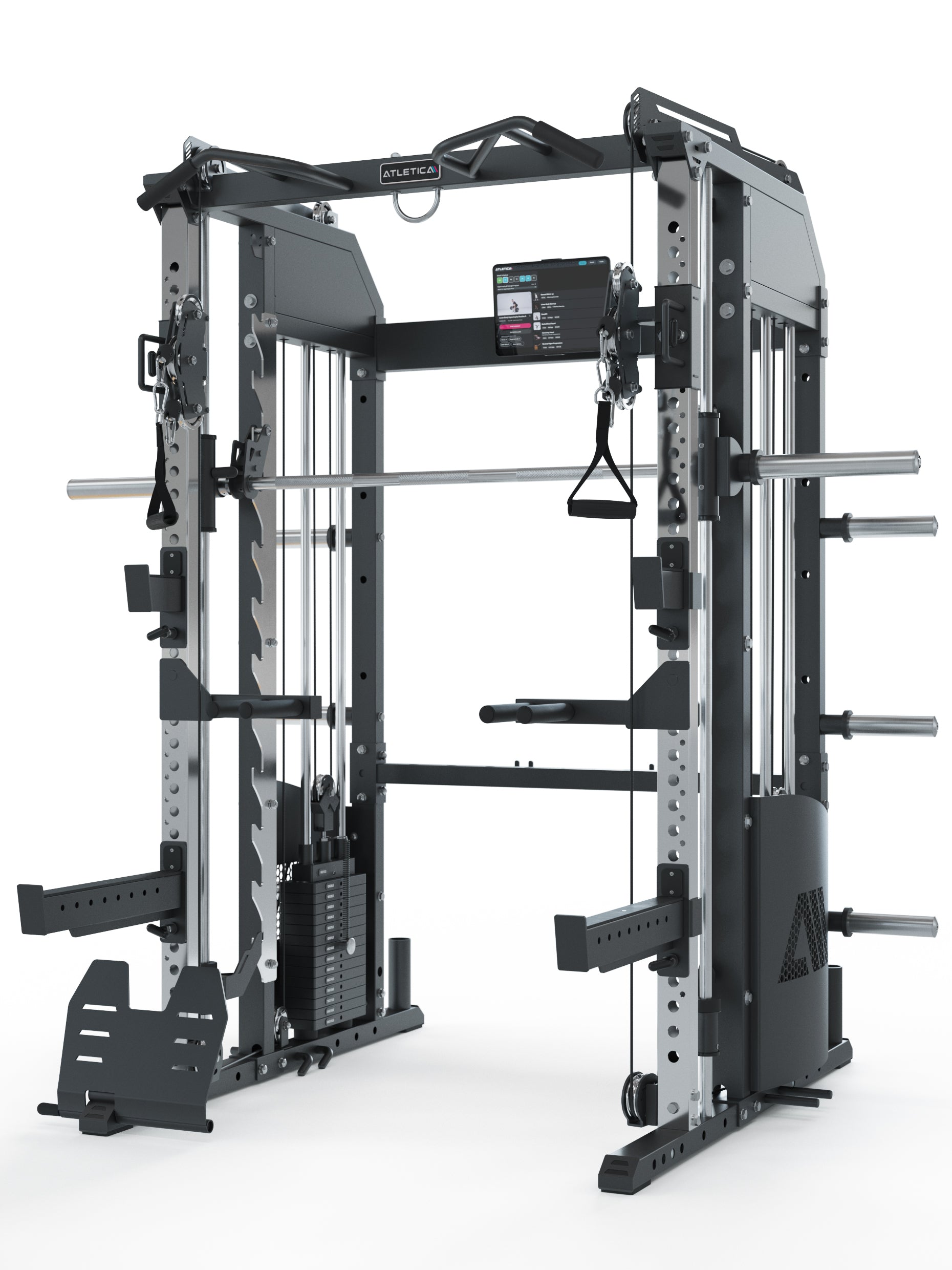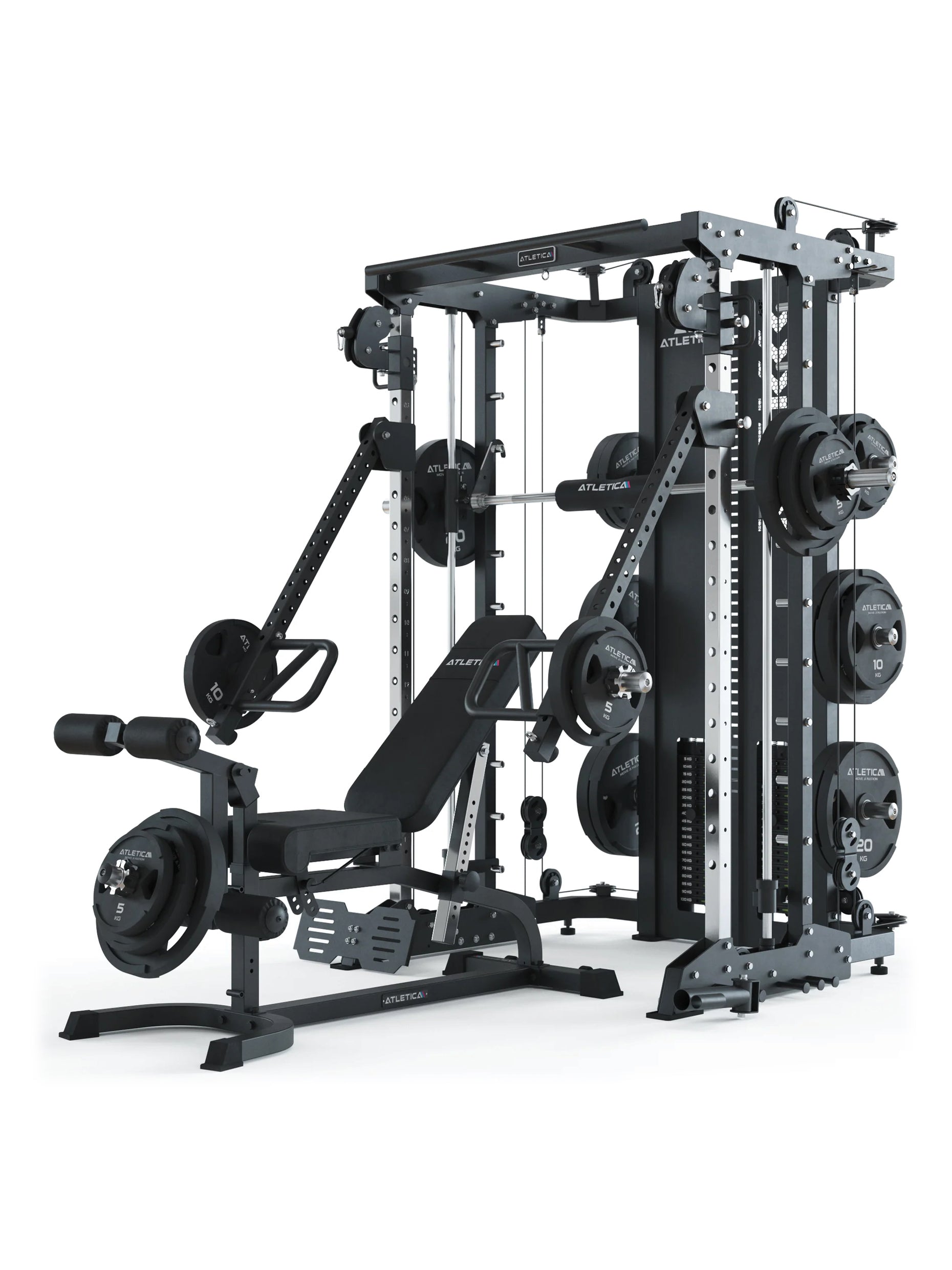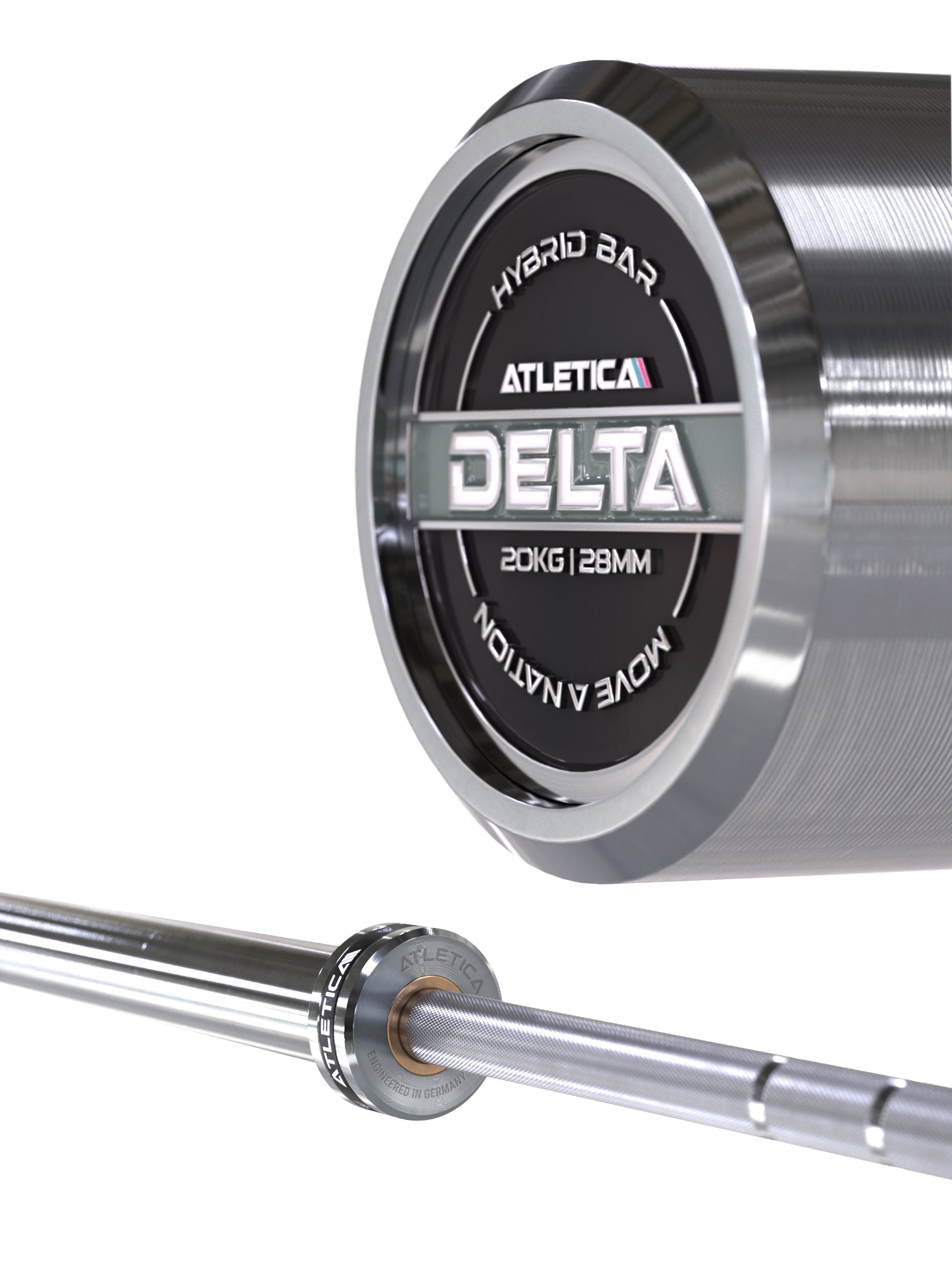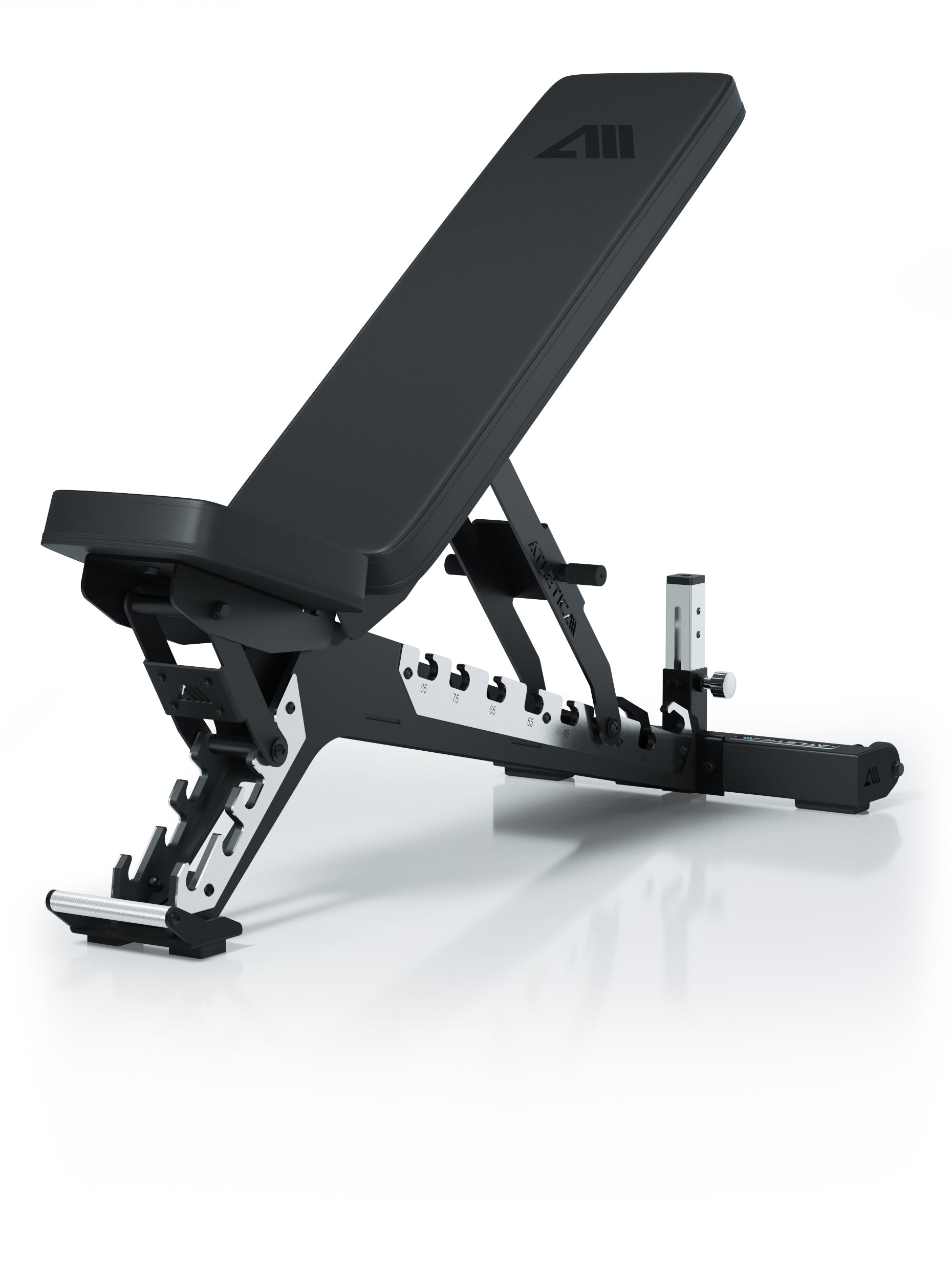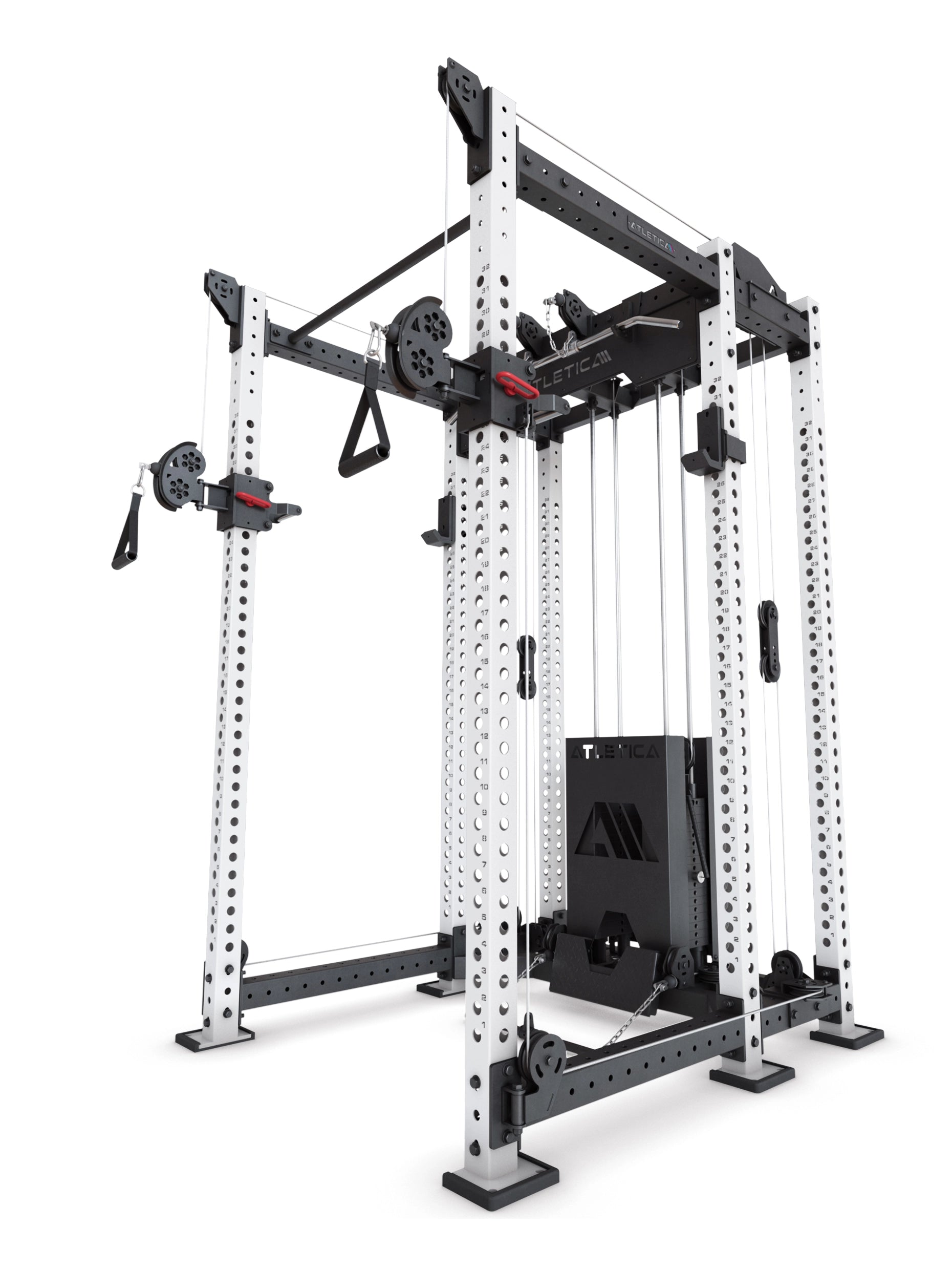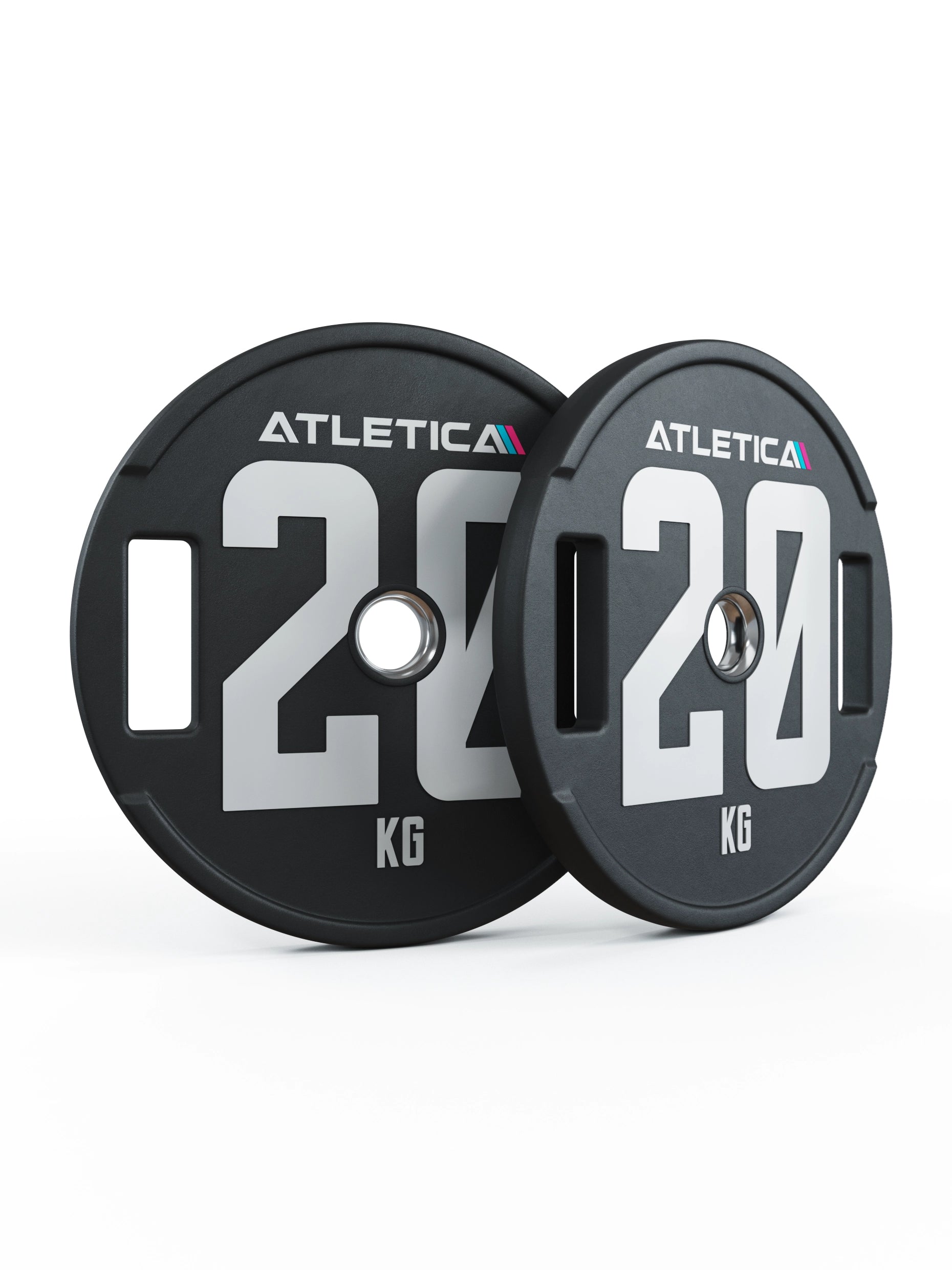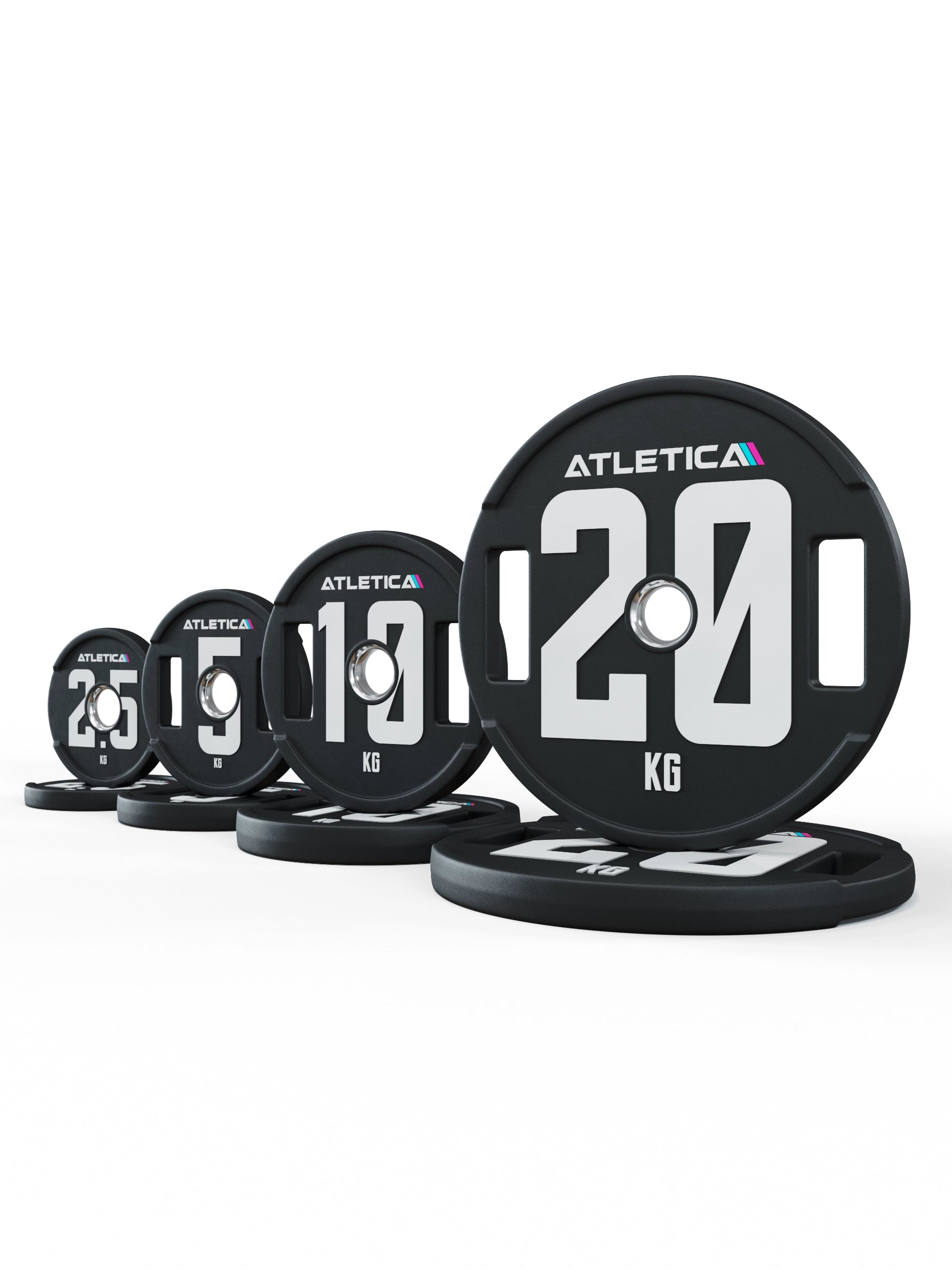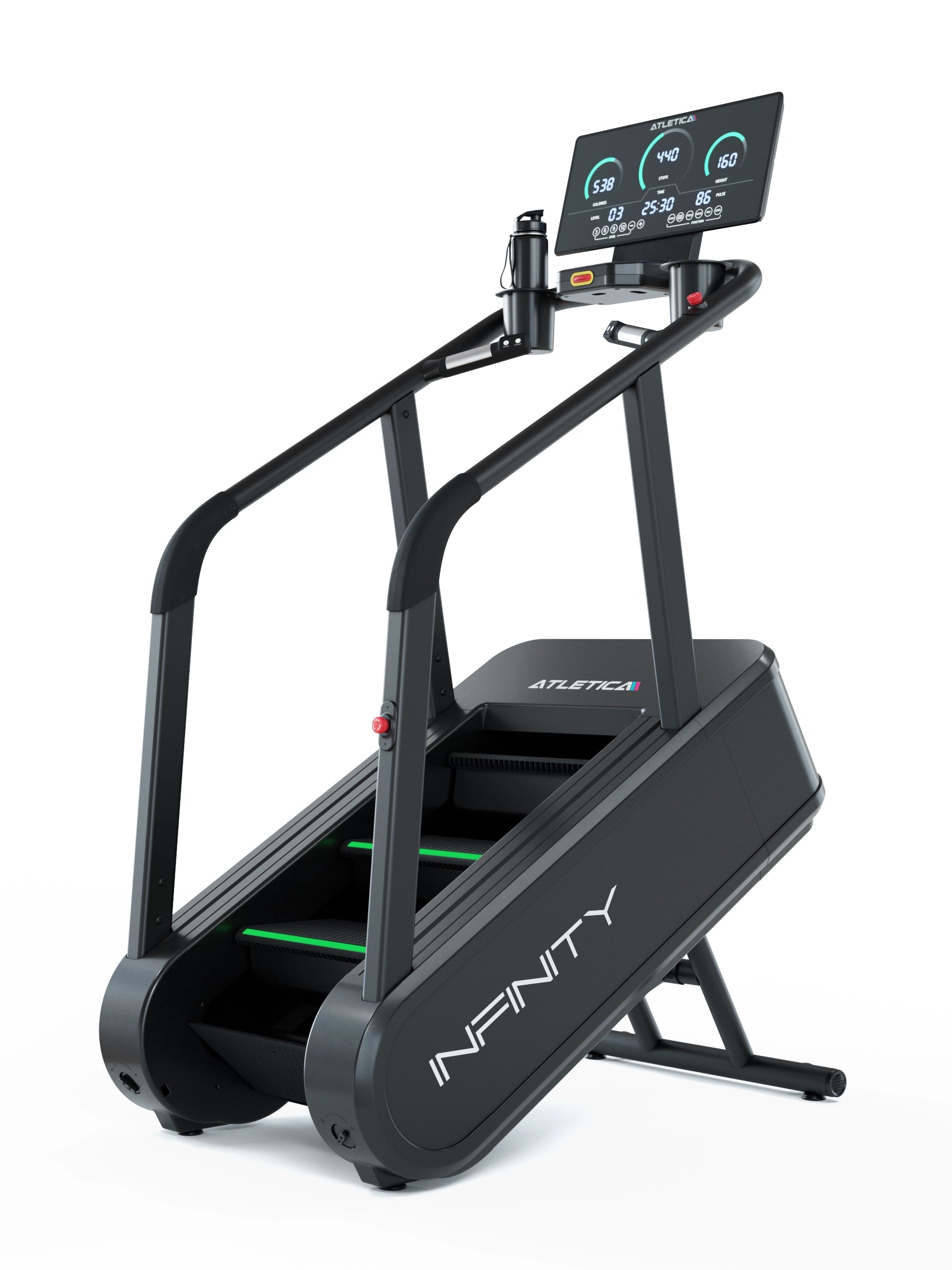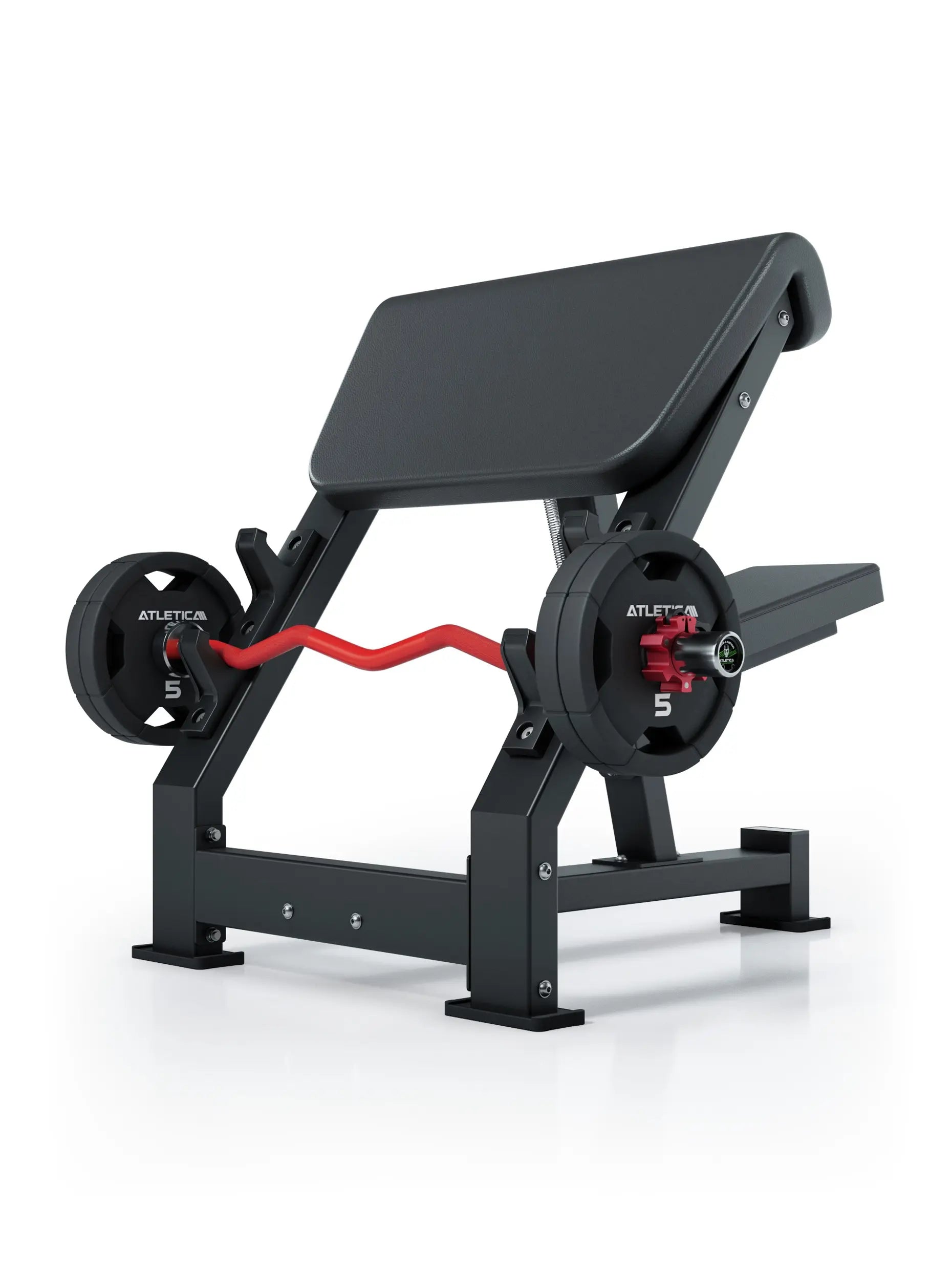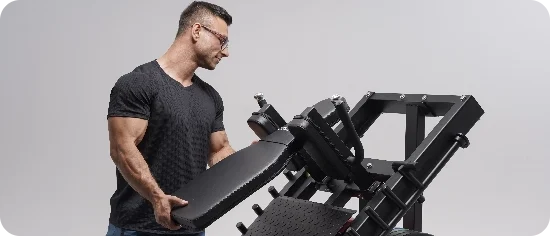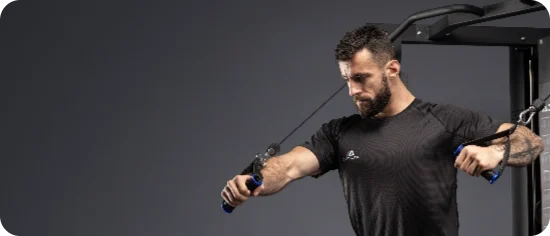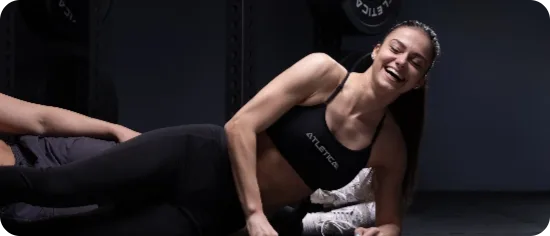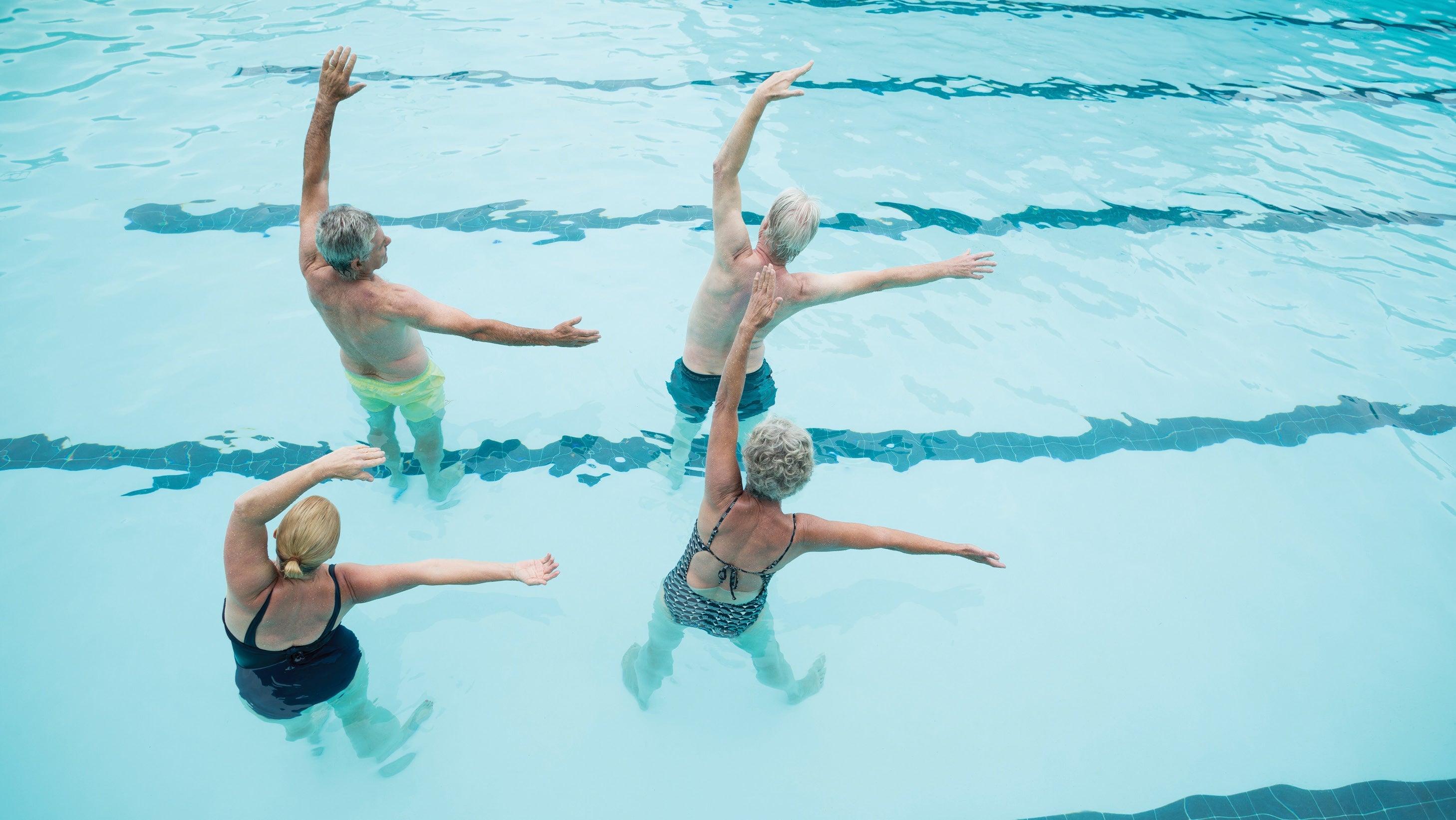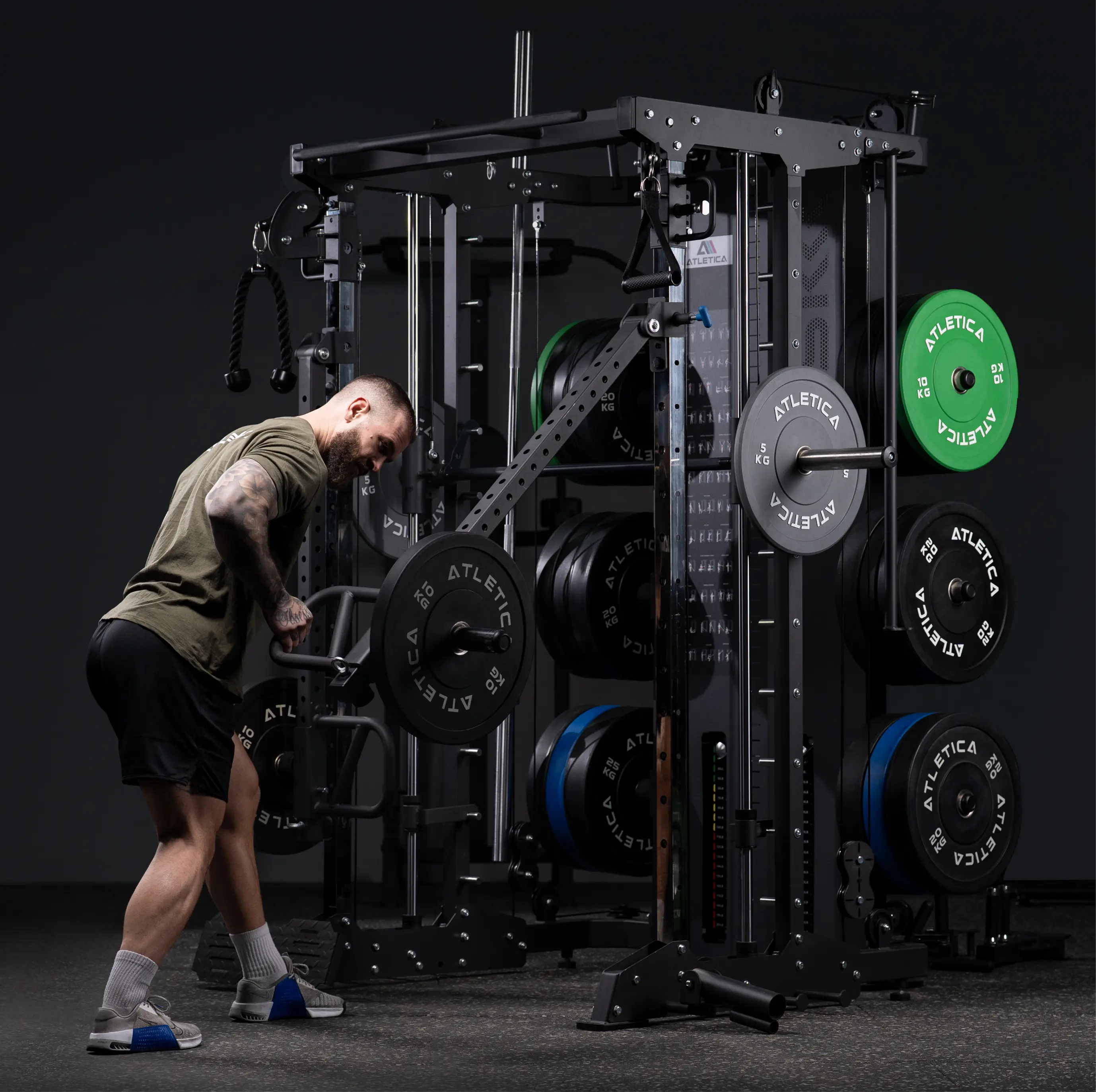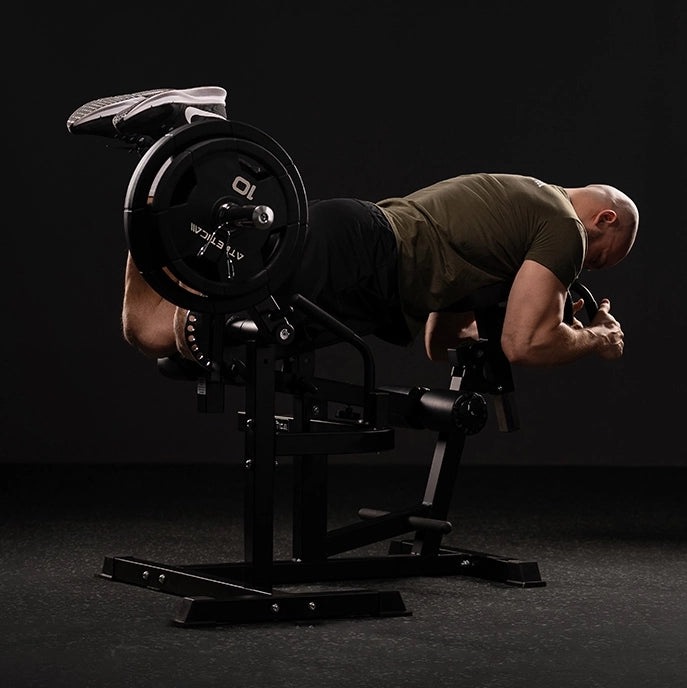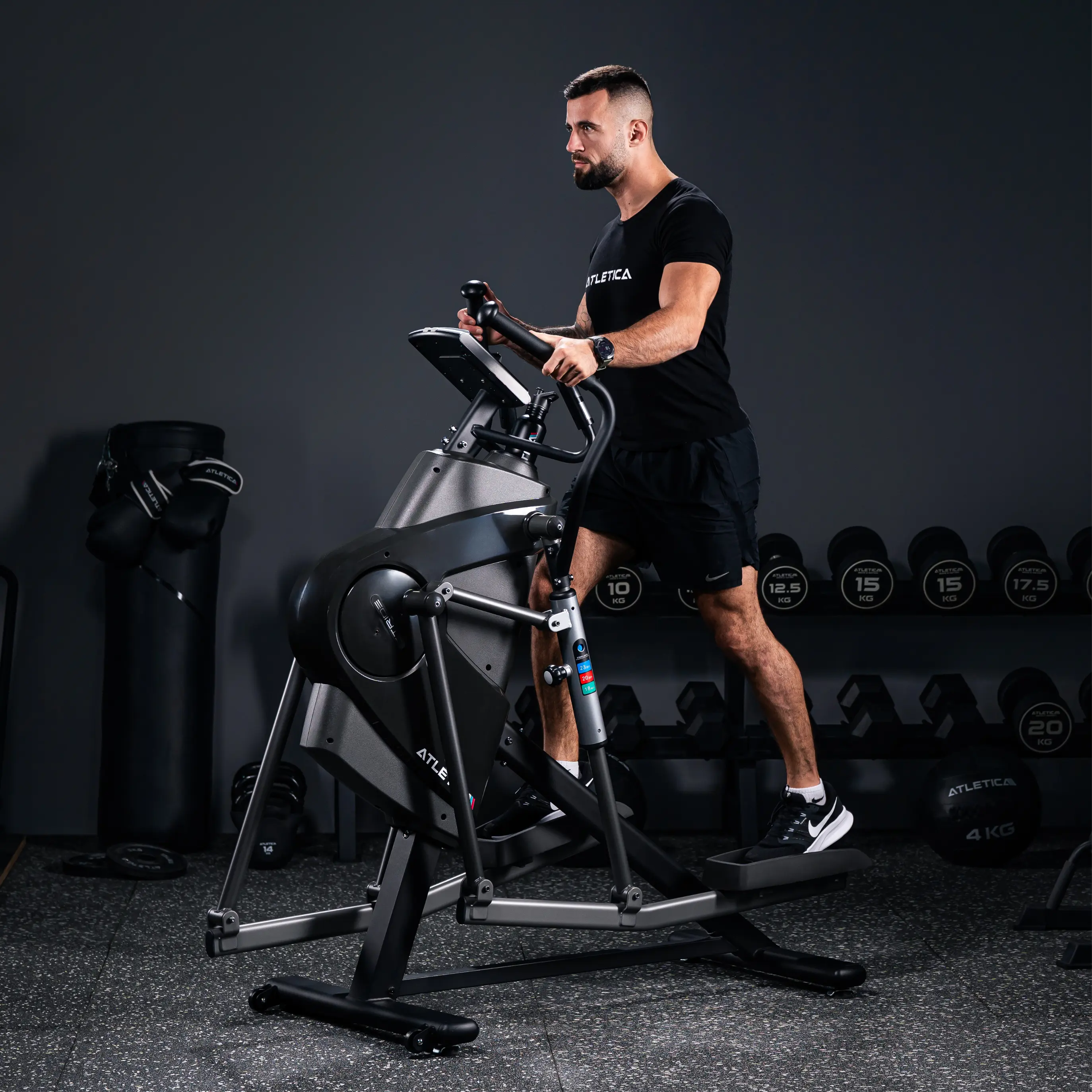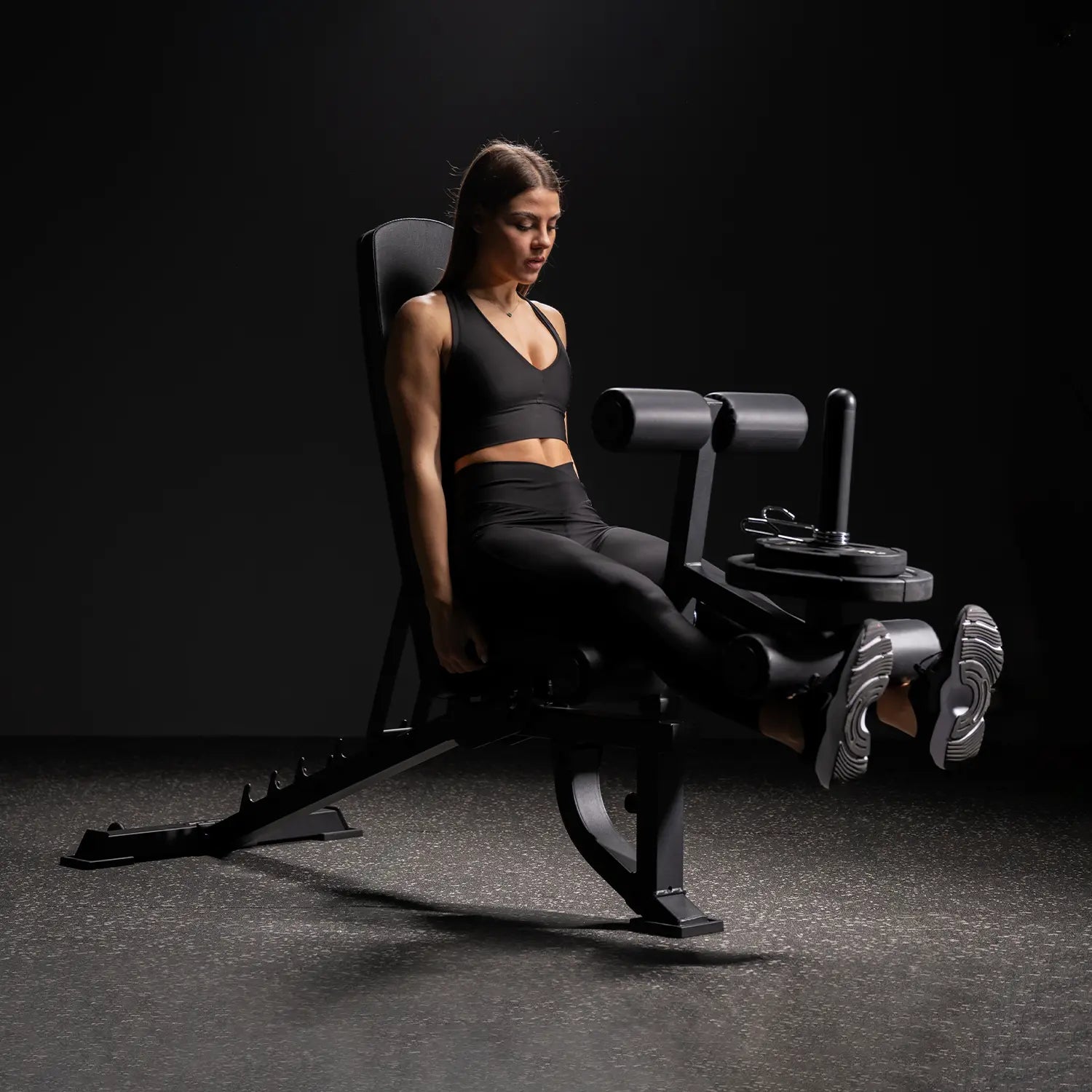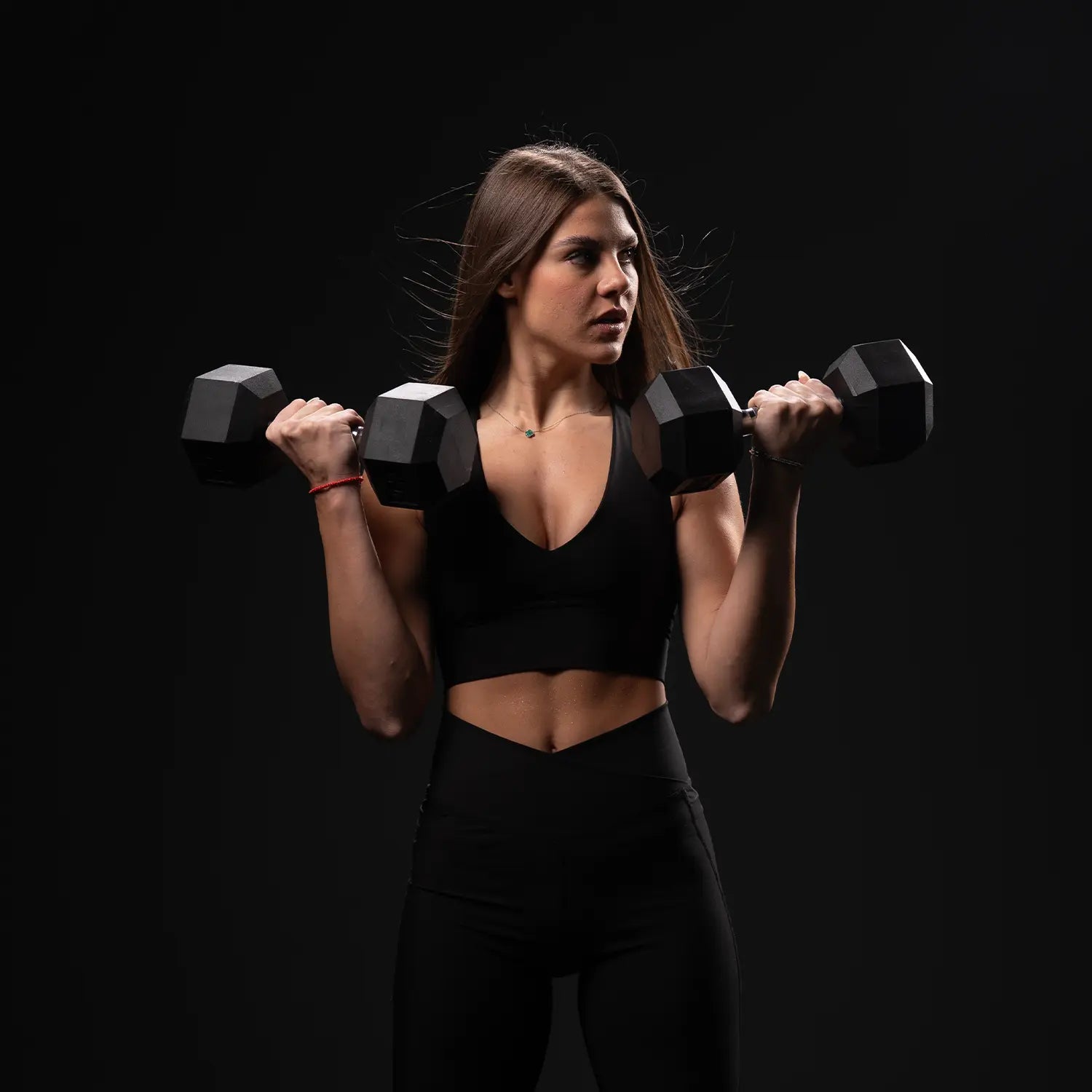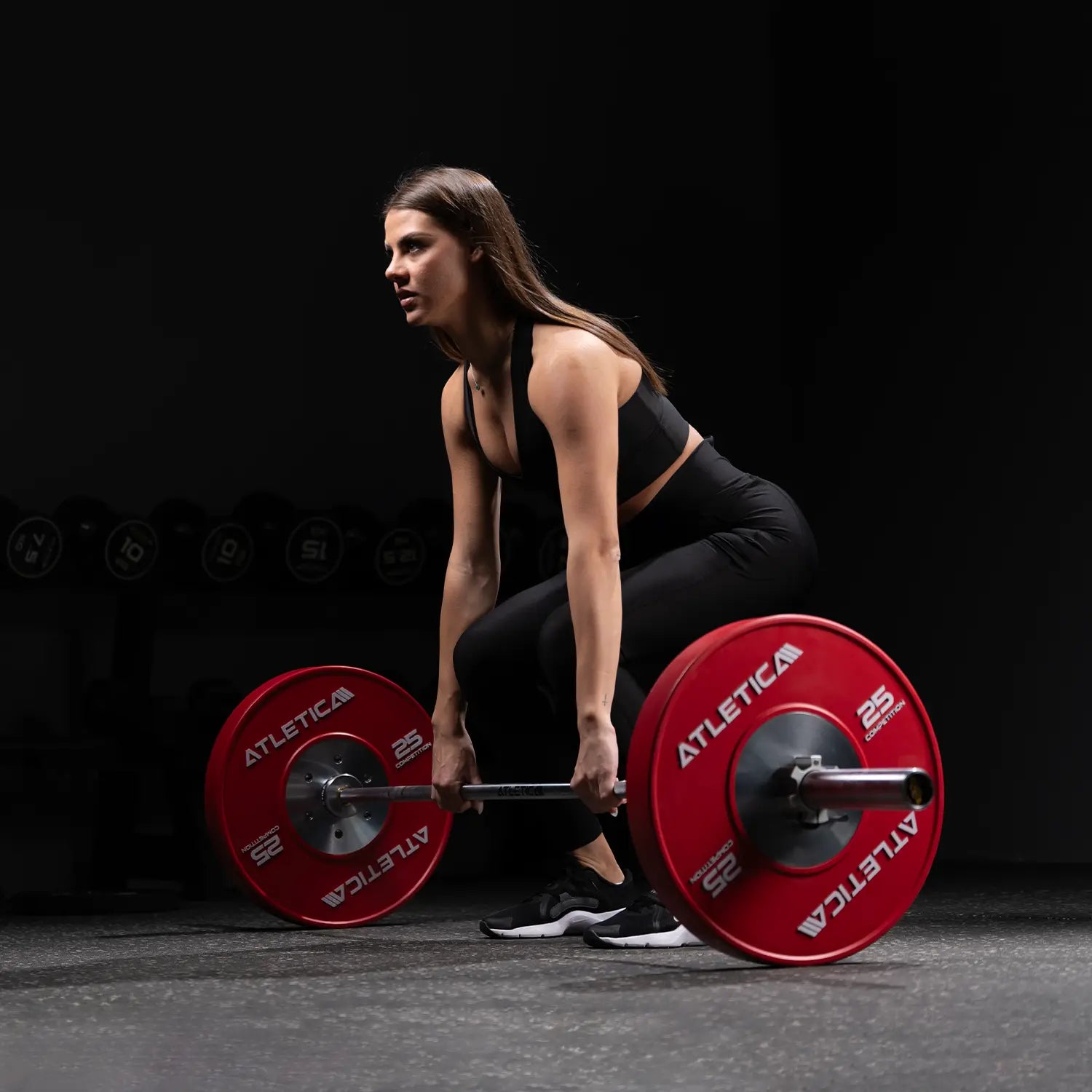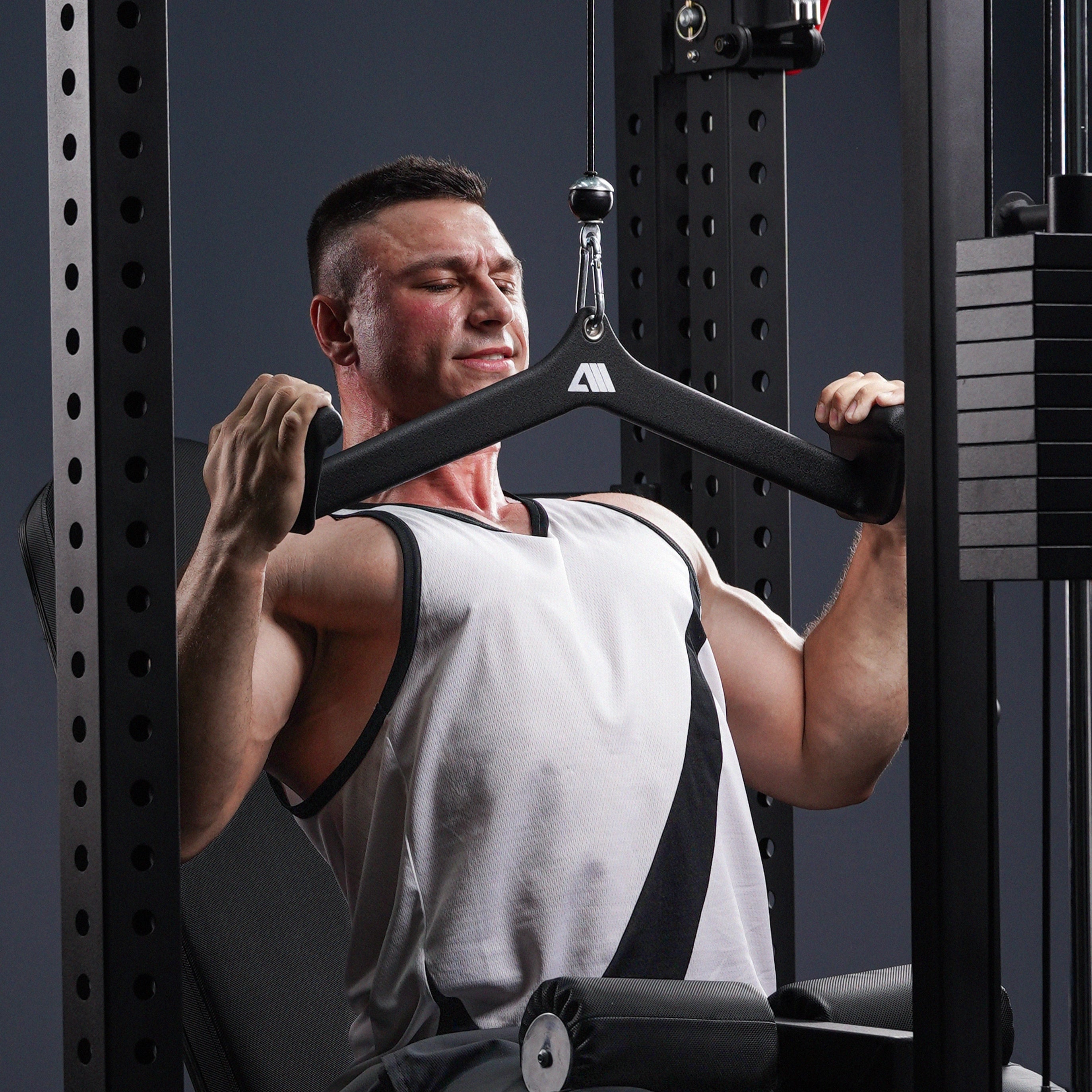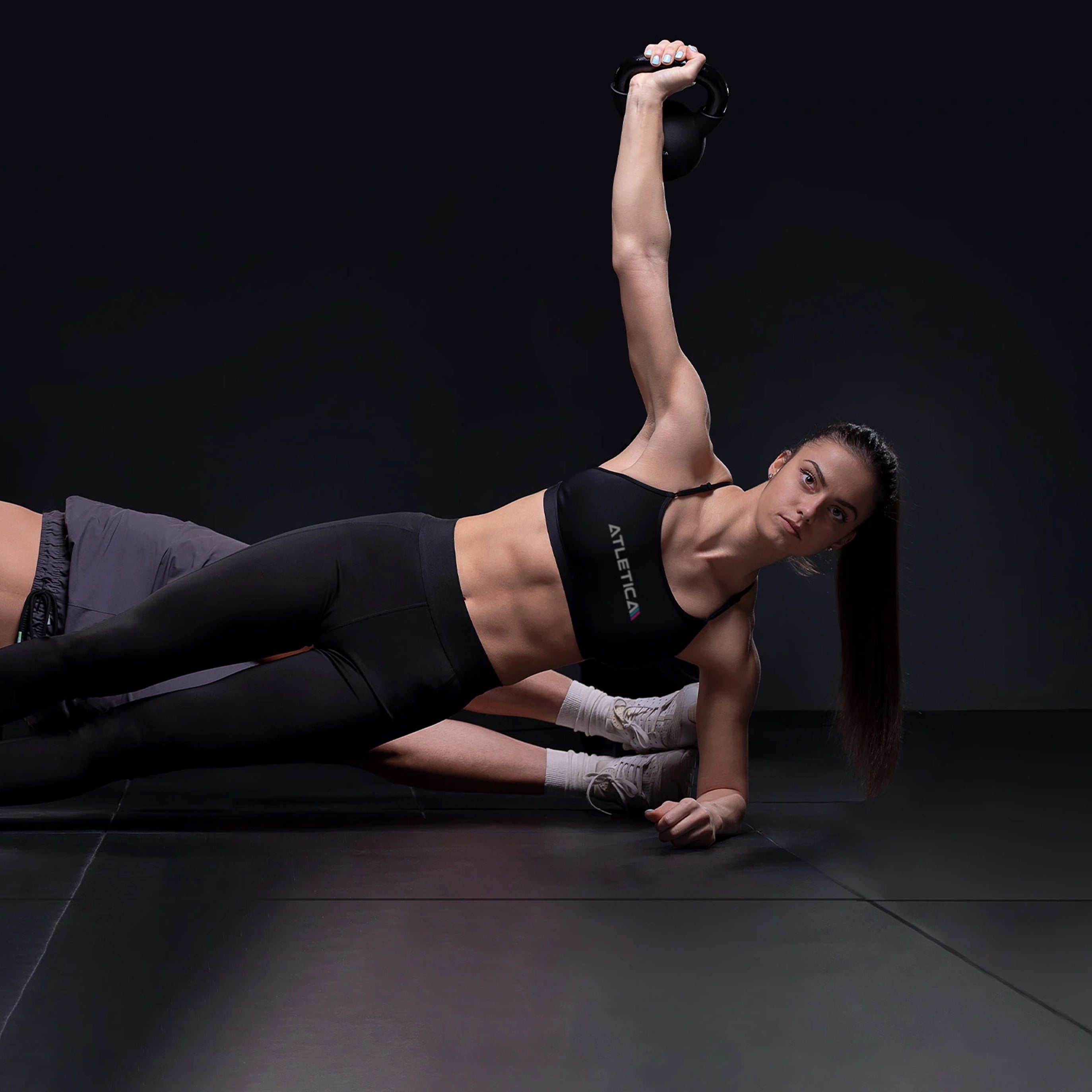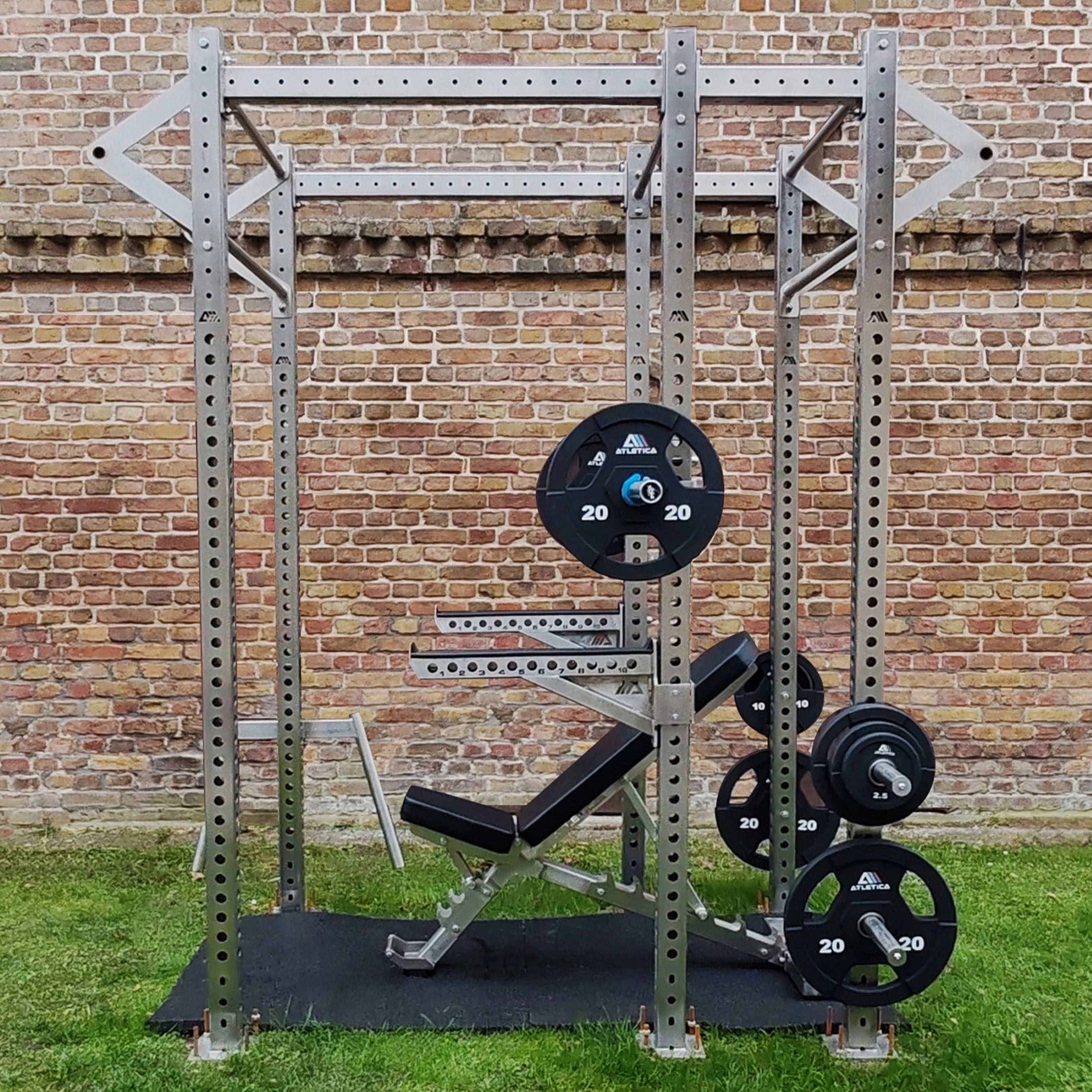The split squat—especially its advanced version, the Bulgarian split squat— is one of the most effective exercises for the lower extremities. It simultaneously trains the thighs, glutes, and core while also improving balance and mobility. Unlike traditional squats, the split squat forces you to exert a one-sided load— ideal for correcting muscular imbalances.
The exercise is versatile, requires little space, and can be intensified with bodyweight or additional weight. The split squat is a true secret weapon, especially for home gyms, but also for ambitious strength athletes in the gym.

The advantages of the split squat at a glance
- Strengthens thighs, buttocks and hips simultaneously
- Promotes balance and coordination
- Perfect for functional leg training
- Balancing muscular imbalances
- Less pressure on the spine compared to squats
- Requires little space and equipment
So if you want to train your legs and buttocks effectively – without traditional equipment – you should include the split squat in your training plan.
How to perform the split squat correctly
- Starting position : Place one leg forward and the other backward on an elevation – e.g. B. a stable weight bench. The front foot is completely on the ground, with the knee pointing forward.
- Movement sequence : Lower your body in a controlled manner until your front knee forms a 90-degree angle. Your back knee approaches the floor without touching it.
- Push up again: Activate your glutes and push yourself up over the heel of your front leg.
- Maintain tension: Make sure to keep your torso stable and not arch your back.
Tip : Bodyweight is sufficient for beginners. Advanced users can use dumbbells or barbells with a power rack for more resistance.

Common mistakes – and how to avoid them
- Slide your knee over your toes : Make sure your front knee always stays over your heel.
- Upper body tilt : Keep your torso upright and engage your core.
- Step too short or too long : The right position is crucial – experiment until you find the optimal distance.
- Instability : Use a wall or bar for balance at first – or use stable tools like the adjustable Atletica weight bench.
Split squat variations for every level
Classic Split Squat
No elevation , both feet on the ground. Ideal for beginners.
Bulgarian Split Squat
With the back leg raised – more intense for the buttocks and legs, more core activation.
Split squat with dumbbells
Increased level of difficulty, also trains grip strength.
Front Rack Split Squat with Barbell
More load on the quadriceps, ideal with a power rack like the Atletica R7.
Explosive Split Squat
With jump – ideal for athletic training, but only with very good technique.

Training plan recommendation with split squats
For beginners
- 3 sets of 8–10 repetitions per leg
- Bodyweight or light resistance band
- 2 times per week in the whole body plan
For advanced learners
- 4 sets of 10–12 repetitions with dumbbells
- Focus on clean, slow execution
- In combination with hip thrusts or lunges
For professionals
- Bulgarian split squats with additional weight (e.g. B. barbell in the power rack)
- 3–5 sets of 6–8 repetitions
- Super sets with Romanian deadlifts or step-ups
Which muscles do you train with the split squat?
The split squat is a complex leg exercise that works several muscle groups simultaneously:
- Quadriceps (front thigh)
- Gluteus Maximus (gluteal muscles)
- Hamstrings (back of thigh)
- Adductors (inner leg)
- Calves (stabilizing)
- Core muscles (for posture and balance)
Depending on the design, you can shift the focus – e.g. For example, with a narrow stance, more quadriceps, with a long stride, more gluteus.

Which Atletica equipment is suitable for the split squat?
You can perform split squats completely without equipment – but with the right equipment you can increase intensity, effectiveness and comfort:
- Adjustable weight bench B10 : Perfect for Bulgarian split squats – stable, non-slip and height adjustable.
- Dumbbells / Hex Dumbbells : For more resistance – ergonomically shaped and ideal for the home gym.
- Power Rack R5 or R7 : Allows split squats with barbell – safe and professional.
- Minibands : Ideal for warming up the glutes and for additional tension.
- Fascia roller : For regeneration and prevention of muscle soreness after leg training.

Conclusion: Split Squat – the foundation for strong legs
If you're looking for an effective, functional, and versatile exercise for your leg training, the split squat is perfect for you. Whether you use your own bodyweight , dumbbells, or a power rack, you'll specifically train strength, balance, and stability.
With the right equipment from Atletica , you'll get even more out of this exercise. Whether it's a weight bench, dumbbells, or mini bands—we'll support you in your training, whether at home or in the studio.
Start your leg training now with the best tools – you'll find everything you need for functional strength training in the Atletica online shop . Or get even more tips for your perfect leg workout in the knowledge blog !


